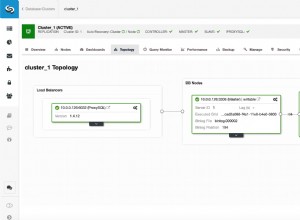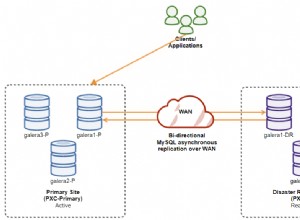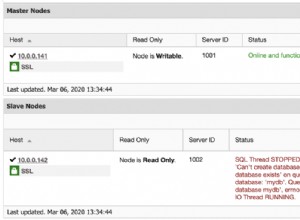Lassen Sie uns zunächst einige Testdaten erstellen:
create table client (client_id integer not null primary key auto_increment,
name varchar(64));
create table portfolio (portfolio_id integer not null primary key auto_increment,
client_id integer references client.id,
cash decimal(10,2),
stocks decimal(10,2));
insert into client (name) values ('John Doe'), ('Jane Doe');
insert into portfolio (client_id, cash, stocks) values (1, 11.11, 22.22),
(1, 10.11, 23.22),
(2, 30.30, 40.40),
(2, 40.40, 50.50);
Wenn Sie die Portfolio-ID nicht benötigen, wäre es einfach:
select client_id, name, max(cash + stocks)
from client join portfolio using (client_id)
group by client_id
+-----------+----------+--------------------+
| client_id | name | max(cash + stocks) |
+-----------+----------+--------------------+
| 1 | John Doe | 33.33 |
| 2 | Jane Doe | 90.90 |
+-----------+----------+--------------------+
Da Sie die Portfolio-ID benötigen, wird es komplizierter. Machen wir es in Schritten. Zuerst schreiben wir eine Unterabfrage, die den maximalen Portfoliowert für jeden Kunden zurückgibt:
select client_id, max(cash + stocks) as maxtotal
from portfolio
group by client_id
+-----------+----------+
| client_id | maxtotal |
+-----------+----------+
| 1 | 33.33 |
| 2 | 90.90 |
+-----------+----------+
Dann fragen wir die Portfolio-Tabelle ab, verwenden aber einen Join zur vorherigen Unterabfrage, um nur die Portfolios zu behalten, deren Gesamtwert für den Kunden maximal ist:
select portfolio_id, cash + stocks from portfolio
join (select client_id, max(cash + stocks) as maxtotal
from portfolio
group by client_id) as maxima
using (client_id)
where cash + stocks = maxtotal
+--------------+---------------+
| portfolio_id | cash + stocks |
+--------------+---------------+
| 5 | 33.33 |
| 6 | 33.33 |
| 8 | 90.90 |
+--------------+---------------+
Schließlich können wir uns (wie Sie es getan haben) mit der Kundentabelle verbinden, um den Namen jedes Kunden aufzunehmen:
select client_id, name, portfolio_id, cash + stocks
from client
join portfolio using (client_id)
join (select client_id, max(cash + stocks) as maxtotal
from portfolio
group by client_id) as maxima
using (client_id)
where cash + stocks = maxtotal
+-----------+----------+--------------+---------------+
| client_id | name | portfolio_id | cash + stocks |
+-----------+----------+--------------+---------------+
| 1 | John Doe | 5 | 33.33 |
| 1 | John Doe | 6 | 33.33 |
| 2 | Jane Doe | 8 | 90.90 |
+-----------+----------+--------------+---------------+
Beachten Sie, dass dies zwei Zeilen für John Doe zurückgibt, da er zwei Portfolios mit genau demselben Gesamtwert hat. Um dies zu vermeiden und ein beliebiges Top-Portfolio auszuwählen, markieren Sie eine GROUP BY-Klausel:
select client_id, name, portfolio_id, cash + stocks
from client
join portfolio using (client_id)
join (select client_id, max(cash + stocks) as maxtotal
from portfolio
group by client_id) as maxima
using (client_id)
where cash + stocks = maxtotal
group by client_id, cash + stocks
+-----------+----------+--------------+---------------+
| client_id | name | portfolio_id | cash + stocks |
+-----------+----------+--------------+---------------+
| 1 | John Doe | 5 | 33.33 |
| 2 | Jane Doe | 8 | 90.90 |
+-----------+----------+--------------+---------------+




